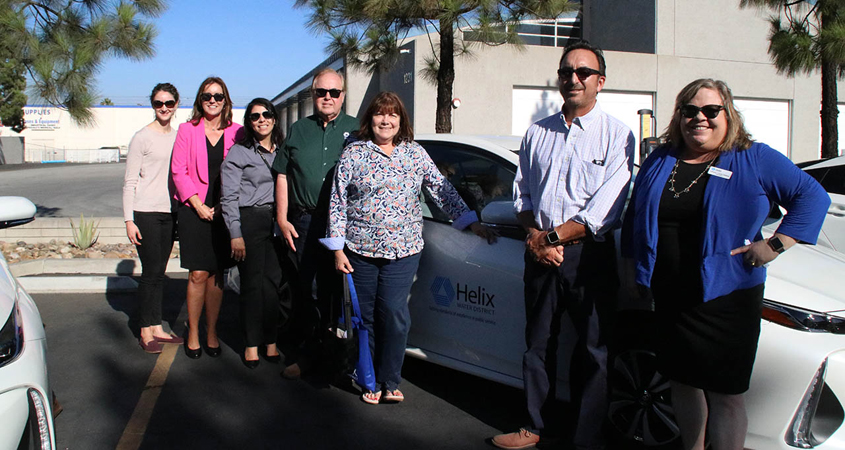Agency Embraces Innovation at Technology Showcase
San Diego, Calif. – Welcome to the future.
That’s the message from the San Diego County Water Authority, which is developing and deploying cutting-edge techniques to maintain its 310 miles of giant pipes that provide water for 3.3 million residents across the region.
“This is all about assessing the condition of our pipelines through the most advanced technology at our disposal and performing repairs before age-related defects become an unforeseen issue,” said Martin Coghill, a senior water resources specialist for the Water Authority.
Coghill spoke before dozens of water industry officials and residents on hand for a Condition Assessment Technology Showcase during the Water Authority Board of Directors’ Engineering and Operations Committee in late August. The showcase included a review of the latest technologies to protect the region’s vital water infrastructure.
The show-and-tell included a 360-degree imaging system Coghill and his team recently developed to capture up-close views of the interior of pipelines too steep for crews to enter safely. Three-dimensional, virtual reality goggles were available for visitors to experience views recorded by the new imaging system.
A week earlier, the Water Authority hosted a technological show-and-tell for businesses and others interested in advancing the tools necessary to maintain and operate major water delivery systems. The outreach efforts were part of the agency’s expanding initiative to identify new technologies – or new uses for existing technology – to benefit the region’s water ratepayers.
Besides developing its own advanced tools, the Water Authority recently launched an online forum to solicit additional innovative concepts from entrepreneurs and members of the public.
Innovation technology takes center stage
One of the key areas in which the Water Authority has embraced innovation is maintenance of its large-scale pipeline system. Inspections with advanced technologies typically are conducted after the mid-point of a pipe’s projected lifespan, meaning some 60 miles of reinforced concrete pipe will need to be inspected over the next nine years. Visual inspections occur every 10 to 15 years.
Some of the advanced technology used in the asset management program was pioneered by the oil and gas industry, with the Water Authority and other agencies adapting and improving it for use in the water world.
“The Water Authority really is in a leadership role in trying new technologies for cost savings and efficiency, and some of these have been brought to us by private sector,” Water Authority General Manager Maureen Stapleton said during the August showcase. “However, a lot of what has been on show has been developed by our own staff…. I can’t tell you how talented our staff is in this area.”
Added Stapleton: “A lot of this can be scaled down to retail agency size, so it can be transferred to member agencies and so those agencies can make repairs without pulling pipes out and disrupting communities.”






